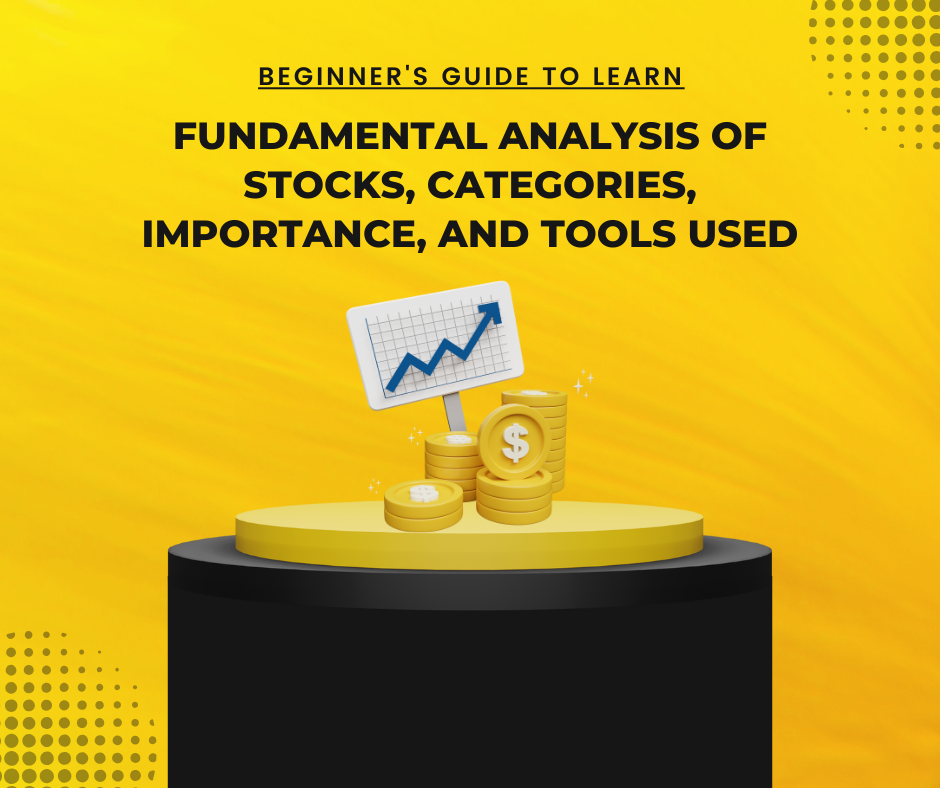
I. Introduction:
Picture this – a world where your money not only works for you but grows effortlessly. The global stock market, projected to reach a staggering $146 trillion by 2027, offers an ocean of opportunities for those who dare to navigate it.
Welcome investor as we unveil the secrets of chart reading, your gateway to unlocking untold success in the stock market.
Ever felt lost in the sea of stock market complexities? Fear not! Today marks the beginning of a journey to demystify chart reading.
Whether you're a novice or a seasoned investor, this skill is your compass to confidently traverse the stock market terrain, making informed decisions that pave the way for financial success.
Feeling overwhelmed by stock market jargon? Worried about where to start? You're not alone. Many share these concerns.
Today, we promise to cut through the noise, simplifying the intricate world of stock charts and technical analysis for every aspiring investor.
In a world where information overload is the norm, taking the first step into the stock market can be intimidating. But here's the truth – you don't need a finance degree or a crystal ball to succeed.
All it takes is a bit of knowledge, a dash of strategy, and a sprinkle of confidence. Let's embark on this journey together, where the complexities of the stock market become your playground, and chart reading becomes your superpower.
As we dive into the basics of stock markets, explore the why behind chart reading, and unravel the key components of charts, remember:
This is your initiation into a world where financial growth is not just a dream but a tangible reality. Get ready to trade the markets, armed with the knowledge to read the charts the easy way. Welcome to a new chapter in your financial journey!
II. Understanding the Landscape:
The Basics of Stock Markets:
Alright, let's kick things off by demystifying the stock market. You've probably heard phrases like NSE, BSE, and Dow Jones, and wondered what it was all about. Well, consider these the playgrounds where financial giants play ball.
Picture this – stocks are like slices of a massive financial pizza. Each slice represents ownership in a company, and the whole pizza? That's the stock market.
Now, exchanges, such as the NSE (National Stock Exchange) and BSE (Bombay Stock Exchange), are like bustling marketplaces where these slices are bought and sold.
Trading hours? Think of it as the stock market's working hours – it's like a 9-to-5 gig, but with a closing bell instead of a clock-out time. Oh, and markets worldwide?
They come in different flavors – from the bustling New York Stock Exchange to our own vibrant Indian markets.
Why Read Charts?
Now, why bother with charts? Well, my friend, charts are your treasure maps in this financial adventure. They hold the key to understanding where the winds of the market are blowing. Think of it as having a weather forecast for your investments.
Let's talk about the advantages – technical analysis, using charts, is like having a secret weapon. It helps you spot trends, predict market moves, and make decisions that aren't just educated guesses but strategic moves. Imagine having the ability to read the market's mind – that's what charts offer.
Key Chart Components:
Time to get down to the nitty-gritty of charts. We've got price, volume, time intervals, and candlesticks on our menu.
Price is the big player – it tells you what people are willing to pay for a stock. Volume? It's like the cheers or boos in a stadium – it shows the intensity of trading activity.
Time intervals? Well, that's like looking at the stock's life in snapshots. Are you checking its progress over a day, a week, or a month? Your call.
And then there are candlesticks – these little guys tell stories. Each one is a chapter in the stock's life, showing you the opening, closing, high, and low prices. It's like a graphic novel for investors.
So, there you have it – the ABCs of the stock market. We've demystified the basics, explored the why behind chart reading, and dived into the essential components of charts. Ready for the next chapter? Get set, because we're about to unravel the secrets of chart reading the easy way. Stay tuned!
III. A quick Step-by-Step Guide to Chart Reading:
Step 1: Grasp the Basics of Stock Markets:
What to Know: Understand the concept of stocks, exchanges (e.g., NSE, BSE), and trading hours.
Why it Matters: A foundational understanding provides context for interpreting stock charts.
Step 2: Discover the Importance of Reading Charts:
What to Know: Explore the benefits of technical analysis using charts, such as trend identification and informed decision-making.
Why it Matters: Recognizing the significance motivates commitment to learning chart-reading skills.
Step 3: Familiarize Yourself with Key Chart Components:
What to Know: Study price, volume, time intervals, and candlesticks as fundamental elements.
Why it Matters: Mastery of these components is crucial for accurate chart interpretation.
Step 4: Master Simple Chart Patterns:
What to Know: Learn easily recognizable patterns like head and shoulders, double tops/bottoms, and trendlines.
Why it Matters: Simple patterns serve as building blocks for more advanced analyses.
Step 5: Demystify Technical Indicators:
What to Know: Introduce yourself to popular indicators – moving averages, MACD, and RSI – and understand their functions.
Why it Matters: Technical indicators add depth to your analysis, offering nuanced insights into market movements.
Step 6: Combine Patterns and Indicators for Strategies:
What to Know: Integrate pattern recognition with technical indicators to form trading strategies.
Why it Matters: This step transforms theoretical knowledge into actionable plans for making informed trading decisions.
Step 7: Apply Your Knowledge to Real-World Trading:
What to Know: Utilize your skills to analyze actual charts, identify trading opportunities, and manage risks.
Why it Matters: Practical application enhances your ability to navigate the complexities of the stock market.
Step 8: Utilize Tools and Resources for Success:
What to Know: Explore charting platforms (free and paid), educational resources, and risk management essentials.
Why it Matters: Access to the right tools enhances your efficiency and effectiveness in chart reading.
Step 9: Stay Informed with Additional Resources:
What to Know: Engage with online communities, attend webinars, listen to podcasts, and explore advanced courses and reading materials.
Why it Matters: Continuous learning keeps you updated on market trends and exposes you to diverse perspectives.
Step 10: Practice, Practice, Practice:
What to Know: Use simulation platforms for risk-free practice, implement your strategies in real-time, and learn from both successes and mistakes.
Why it Matters: Consistent practice refines your skills, builds confidence, and helps you adapt to dynamic market conditions.
III. Demystifying Charts the Easy Way:
Simple Patterns to Master:
Welcome to the fun part – decoding the secrets hidden within stock charts! Let's talk patterns – those nifty formations that can give you a sneak peek into a stock's next move.
Ever heard of the head and shoulders pattern? No, it's not a shampoo commercial. It's a telltale sign that a trend reversal might be on the horizon.
Double tops and bottoms? Imagine the market doing a little dance, and these patterns signal the music is about to change.
Trendlines are like the plot twists in our chart-reading novel. They showcase the direction a stock is headed, helping you anticipate its next move.
Visuals are key here, so we'll throw in some real-life examples to make these patterns pop off the charts.
Technical Indicators Demystified:
Now, let's talk about the superheroes of chart reading – technical indicators. These are like the sidekicks that help you make sense of the market's complex plot.
Moving averages are the dependable friends that smooth out price trends, making them less erratic. MACD, the cool kid on the block, helps you identify changes in momentum. And RSI? It's like your stock's heartbeat – telling you when it's overbought or oversold.
But wait, no need for a finance degree to grasp this. We'll break down these indicators in simple, everyday language. No jargon, no confusion – just clear explanations to empower you.
—------------
Putting it All Together:
Now, the grand finale – weaving patterns and indicators into powerful trading strategies. It's like putting together the pieces of a puzzle to reveal the bigger picture.
Imagine spotting a head and shoulders pattern, checking your moving averages, and getting the green light from the RSI. That's the sweet spot where patterns and indicators align, signaling a potential trading opportunity.
We're not leaving you hanging – we'll provide actionable steps for beginners. You're not just reading charts; you're creating a roadmap for successful trading. Stay tuned as we guide you through the practical application of chart reading in the real world. Ready to embark on this exciting journey? Let's dive in!
IV. Putting it All Together:
Step-by-Step Guide:
Now that we've laid the groundwork, let's dive into the practical side of things. It's time to put those chart-reading skills into action. Imagine you're gearing up for a treasure hunt, and the treasure is a profitable trade.
First off, we'll guide you on how to read charts for real-world trading. Think of it as deciphering a map that leads to hidden treasures in the stock market. From recognizing patterns to interpreting indicators, we've got your back every step of the way.
Real-life Examples:
Theory is great, but let's make it even more tangible. We'll walk you through real-life examples of applying identified patterns and indicators to analyze actual charts. It's like having a mentor beside you, showing you the ropes with hands-on experiences.
Whether it's a bullish trend, a reversal, or a potential breakout, we'll explore diverse scenarios, so you're well-prepared for whatever the market throws your way.
Risk Management Strategies:
Trading isn't just about finding opportunities; it's also about managing risks. We'll unravel the art of setting stop-loss orders – your safety net in the unpredictable world of stocks.
It's like having a guardrail on your financial highway, ensuring you don't veer off course.
We'll delve into risk-reward ratios, teaching you how to balance the potential gains with possible losses. It's all about smart decisions and calculated risks.
Importance of Practice:
Now, here's a pro tip – practice makes perfect. We'll highlight the importance of practicing and backtesting your strategies before venturing into live trading.
It's akin to rehearsing your lines before the big performance.
With a demo account or paper trading, you can test your skills without risking real money. This way, when you enter the real stock market arena, you'll be a seasoned warrior, ready for whatever challenges may come your way.
Stay tuned as we move from theory to action, guiding you through the practical aspects of chart reading. Ready to transform your newfound knowledge into real-world success? Let's make it happen!
V. Tools and Resources for Success:
Free and Paid Charting Platforms:
Alright, buckle up! We're about to explore the world of charting platforms, your trusty companions in the journey of chart reading. Whether you're on a tight budget or ready to invest, we've got options for you.
Ever heard of Google Finance? It's like the Swiss Army knife of free charting platforms – user-friendly and packed with essential features.
Finviz is another gem, offering a visual feast of market data. And for the enthusiasts willing to invest a bit, TradingView is like the VIP pass, with a plethora of tools and tutorials.
Educational Resources:
Now, let's feed your hunger for knowledge. We've curated a list of blogs, books, and online courses that'll elevate your chart-reading game. Picture it as a library where each resource is a golden nugget waiting to be discovered.
Investopedia, our first stop, is your go-to for comprehensive financial education. StockCharts.com is not just a charting platform; it's a treasure trove of educational resources. And for those who prefer learning from the masters, "Technical Analysis for the Trading Professional" by John Murphy is a must-read.
Online Communities:
Join forums like Reddit's r/StockMarket or social media groups dedicated to trading. Engage with other enthusiasts, share experiences, and gain insights from a community of like-minded individuals.
Webinars and Workshops:
Attend webinars hosted by trading experts and educators. Platforms like TradingView often organize live sessions where you can interact, ask questions, and deepen your understanding of advanced concepts.
Podcasts:
Tune in to podcasts such as "Chat with Traders" or "The Stock Trading Reality Podcast." Listening to experienced traders share their stories and strategies can offer valuable insights and keep you motivated.
Financial News Outlets:
Stay informed by regularly following financial news outlets like CNBC, Bloomberg, or financial sections of reputable news websites. Understanding market trends and global events is integral to making informed decisions.
Additional Reading:
Explore more books on technical analysis and trading. "A Random Walk Down Wall Street" by Burton Malkiel provides a broader perspective on investing, while "Market Wizards" by Jack D. Schwager delves into the stories of successful traders.
Advanced Courses:
Consider enrolling in advanced online courses offered by educational platforms ( First Demat ) or trading institutes. These courses often cover intricate topics in detail, providing a structured approach to expanding your knowledge.
Simulation Platforms:
Practice your chart-reading skills using simulation platforms like Investopedia's Stock Simulator or TradingView's paper trading feature. Simulated trading allows you to apply your knowledge in a risk-free environment.
Risk Management Essentials:
Time to talk about the unsung hero of successful trading – risk management. We're not just about spotting patterns; we're about safeguarding your investments.
Setting stop-loss orders is like having a safety net. It ensures that if a trade takes an unexpected turn, you won't free fall into losses.
We'll emphasize the importance of maintaining a healthy risk-reward ratio, striking that delicate balance between ambition and caution.
So, there you have it – the tools and resources that'll equip you for success in your chart-reading adventure.
From free charting platforms to educational gems, we've got your back. Ready to dive into a world of knowledge and practical tools? Let's continue our journey to mastering the art of chart reading!
VI. Conclusion:
Benefits of Chart Reading:
Congratulations! You've now journeyed from the basics to the practical application of chart reading. But before we wrap up, let's revisit the perks of this newfound skill.
Imagine being equipped with the ability to spot trends, predict market movements, and make informed decisions. Chart reading isn't just about numbers; it's about deciphering the language of the market. With this skill in your arsenal, you're not just an investor; you're a strategic player in the stock market game.
Now, here's your call to action. The journey doesn't end here; it's just the beginning. Ready to continue your exploration?
Perhaps you want to dive deeper into our curated resources, or maybe you're eager to try your hand at real-world trading. Whatever your next step, we're here to support you.
VII. Bonus Sections:
Success Stories:
Now, let's delve into the inspiring world of success stories – real-life tales of individuals who turned their chart-reading skills into financial triumphs. These aren't stories from some distant realm; they're narratives from everyday people, just like you.
Meet Priya, a young professional in her late twenties, passionate about achieving financial independence. With a beginner's guide and a few well-placed trades, she turned her initial investment into a growing portfolio. Priya's story isn't just about profits; it's about taking control of her financial destiny.
Then there's Raj, a casual investor frustrated with inconsistent results. Armed with newfound knowledge from day trading strategies, he transformed his approach. Raj's journey showcases the power of understanding technical indicators and making informed decisions.
These success stories aren't about luck; they're about individuals who equipped themselves with the tools and knowledge to navigate the stock market successfully. As you embark on your own chart-reading journey, remember: these success stories aren't the exception; they're the potential outcome.
Common Mistakes to Avoid:
In any adventure, knowing what pitfalls to avoid is crucial. Let's shine a light on common mistakes that can trip up even the most seasoned chart reader.
Chasing Trends: Picture this – the stock market is a marathon, not a sprint. Chasing trends, like trying to catch a speeding train, can lead to missed opportunities and unnecessary risks. We'll guide you on maintaining a steady pace and making strategic moves.
Overreliance on Indicators: While technical indicators are powerful allies, overreliance can lead to missteps. It's like having too many cooks in the kitchen – confusion instead of clarity. We'll show you how to strike the right balance and avoid drowning in a sea of data.
By learning from these common mistakes, you'll navigate the stock market with a clearer perspective, sidestepping obstacles that could hinder your progress.
Advanced Techniques:
For those hungering for more knowledge, let's touch on advanced techniques that add depth to your chart-reading skill set.
Elliott Wave Theory: Imagine riding the waves of market trends with precision. Elliott Wave Theory helps you do just that, providing insights into the repetitive patterns of market cycles.
We'll introduce you to this advanced concept, igniting your curiosity for further exploration.
Fibonacci Retracements: Ever heard of retracing steps for a second look? Fibonacci retracements apply a similar principle to market trends.
These mathematical ratios act as guideposts, helping you identify potential reversal points. Think of it as unraveling the secret code embedded in stock charts.
As you progress on your chart-reading journey, consider these advanced techniques as the hidden gems waiting to be discovered. They're not prerequisites, but rather invitations to explore the deeper realms of technical analysis.
Congratulations! You've now traversed the entire landscape of chart reading, from understanding the basics to practical application and beyond. The journey doesn't end here; it evolves with every trade, every success, and every lesson learned. Ready to embrace the ongoing adventure of mastering the art of chart reading? Let's continue this exciting expedition together!
VIII. Frequently Asked Questions (FAQs):
Q1: I'm a complete beginner. Can I really learn to read stock charts from scratch?
Absolutely! Our guide is tailored for beginners like you. We break down complex concepts into easy-to-understand language, providing step-by-step guidance. Whether you're a 10th grader or a PhD holder, chart reading is a skill that can be mastered with dedication and the right resources.
Q2: How much time does it take to see results from chart reading?
Chart reading, like any skill, requires practice. While some may see results sooner, it's essential to focus on the learning process. Consistency is key. Think of it as learning to play a musical instrument – the more you practice, the more proficient you become.
Q3: Are there risks involved in stock market trading, even with chart reading skills?
Absolutely. The stock market, though full of opportunities, carries inherent risks. Chart reading is a tool that can help you make informed decisions, but it doesn't eliminate risks entirely. We emphasize the importance of risk management strategies, such as setting stop-loss orders, to mitigate potential losses.
Q4: Can I use chart reading for long-term investing, or is it more suited for day trading?
Chart reading is versatile and can be applied to various trading styles. Whether you're interested in long-term investing or day trading, understanding charts can enhance your decision-making. The guide covers strategies for both, allowing you to adapt chart reading to your preferred trading approach.
Q5: How do I choose the right charting platform for me?
Selecting a charting platform depends on your preferences and needs. If you're just starting, user-friendly platforms like Google Finance or Finviz are excellent choices. For more advanced features, TradingView is a popular option. Consider your trading goals and explore platforms that align with your requirements.
Q6: Can I apply chart reading skills to cryptocurrency markets?
Absolutely! Chart reading principles are transferable across various financial markets, including cryptocurrencies. The guide provides a foundation that can be adapted to analyze charts in the dynamic world of digital assets.
Q7: Are there any prerequisites for learning advanced techniques like Elliott Wave Theory or Fibonacci Retracements?
While not mandatory, having a solid understanding of basic chart reading concepts is recommended before delving into advanced techniques. The guide gradually builds your knowledge, preparing you for more intricate analyses. Take your time, master the fundamentals, and then explore the advanced chapters.
Q8: Can I use chart reading for any stock, or are certain stocks more suitable for this approach?
Chart reading can be applied to any stock, irrespective of its size or industry. Whether you're interested in large-cap tech stocks or small-cap pharmaceuticals, the principles of chart reading remain the same. The guide equips you with the skills to analyze a diverse range of stocks.
Q9: Is chart reading a guaranteed way to make profits in the stock market?
No, chart reading is not a guaranteed profit-making strategy. While it enhances your decision-making ability, the stock market is inherently unpredictable. Success in trading involves a combination of skills, knowledge, and a disciplined approach. The guide emphasizes risk management and making informed decisions based on chart analysis.
Q10: Are there specific times during the day when chart reading is more effective?
Chart reading is effective throughout the trading day, but certain periods may offer more volatility and trading opportunities. The opening and closing hours often see increased activity, creating potential opportunities. The guide discusses how to adapt your chart-reading strategies to different market conditions and times.
Comments (0)
Categories
Recent posts


Best Intraday Trading Strategies for ...
24 Jun 2024
Fundamental Analysis Of Stocks, ...
4 Jul 2024
The Math of Trading: A Probability Game
12 Jun 2024



